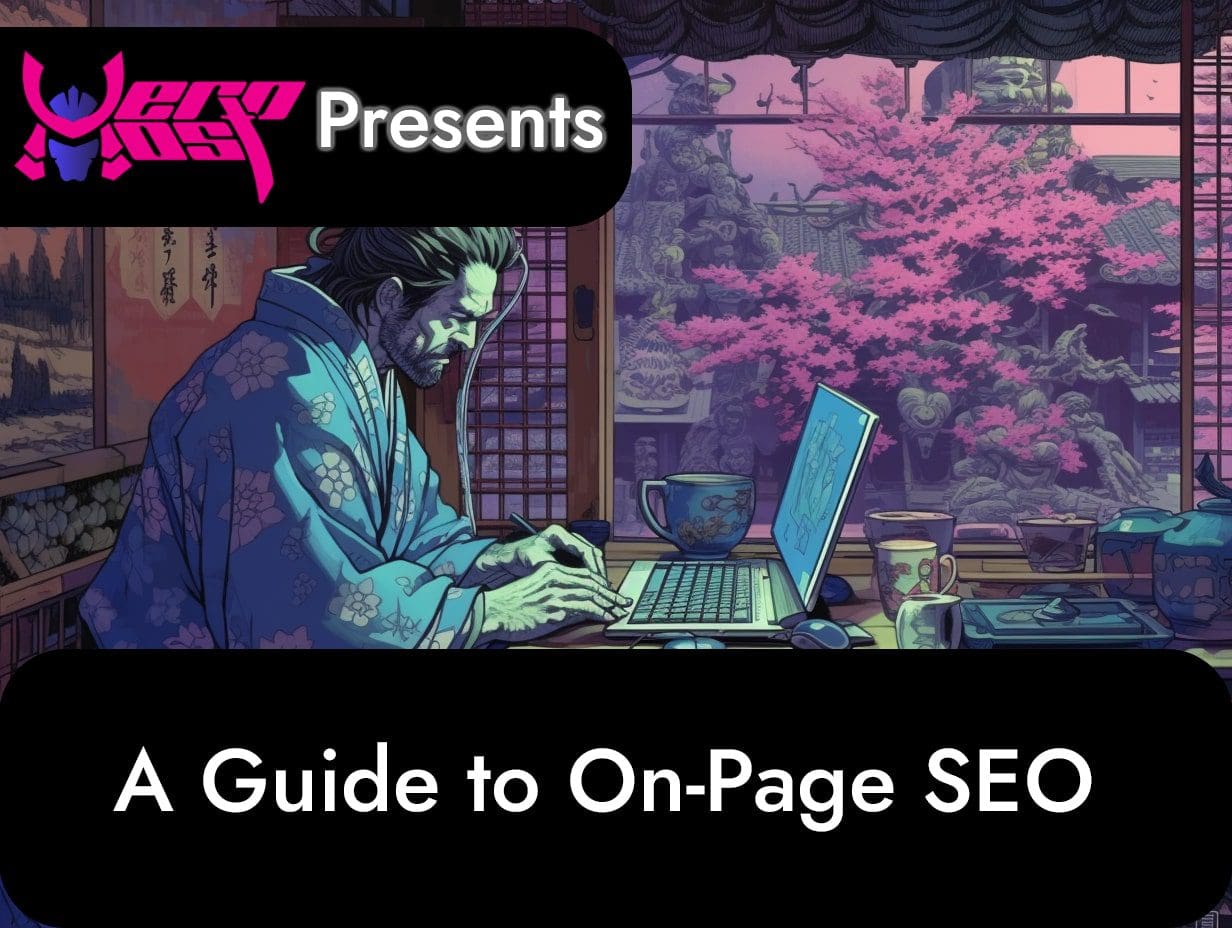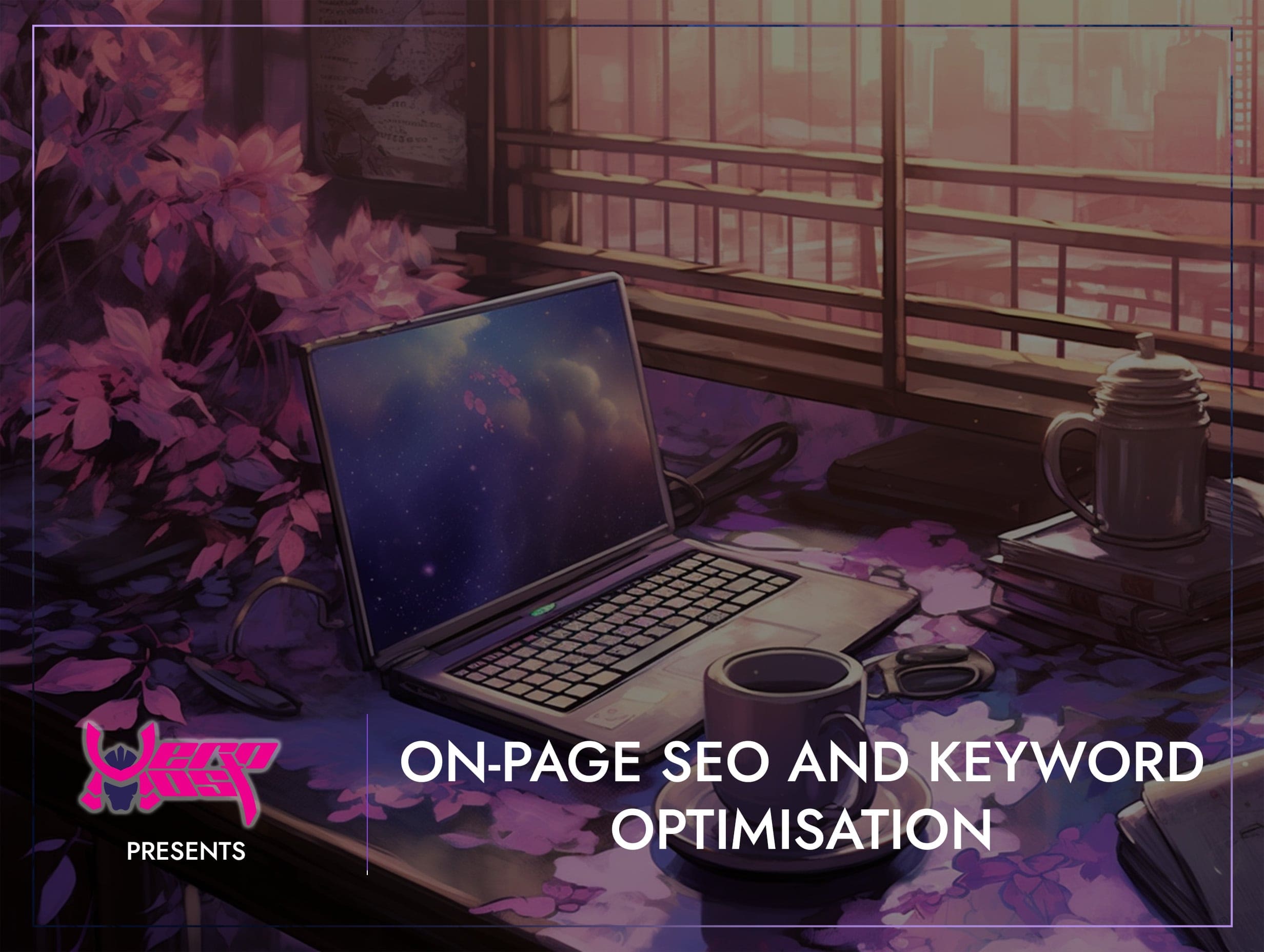A Guide to On-Page SEO
- Home
- Search Engine Optimisation (SEO)
- A Guide to On-Page SEO

- Mikey Ryu
- November 6, 2023
- 0
A Guide to On-Page SEO
What is On-Page SEO
In the vast digital landscape, where billions of websites compete for attention, on-page SEO is the key to standing out. Search engines are continuously evolving, and to stay ahead in the game, understanding the intricacies of on-page SEO is crucial. In this comprehensive guide, we’ll delve into the world of on-page SEO, exploring what it is, how it works, and the best practices that will help you optimize your web content for better search engine rankings and improved user experience.
Table of Contents:
- What is On-Page SEO?
- The Importance of On-Page SEO
- Optimizing Title Tags and Meta Descriptions
- Header Tags and Proper Content Structuring
- Keyword Optimization and Content Quality
- Image Optimization: Enhancing Visual Content
- Internal Linking: Navigating Your Website
- Page Speed: The Need for Speed
- Mobile Friendliness: Adapting to Mobile Users
- Measuring On-Page SEO Success
- Conclusion: The Power of On-Page SEO
What is On-Page SEO?
On-page SEO refers to the practice of optimizing individual web pages on your website to improve their search engine ranking and visibility. It focuses on the elements you have direct control over, making it a critical component of any SEO strategy. These elements include content, HTML source code, and metadata.
The Importance of On-Page SEO
On-page SEO is essential for various reasons:
- Better Search Engine Ranking: Properly optimized web pages are more likely to rank higher in search engine results, increasing your chances of being seen by potential visitors.
- User Experience: On-page optimization not only caters to search engine algorithms but also enhances the user experience by providing well-structured and relevant content.
- Credibility and Trust: Websites with high-quality, optimized content are generally considered more trustworthy by users and search engines alike.
- Increased Organic Traffic: A well-optimized web page can attract more organic traffic, reducing the need for paid advertising.
Optimising Title Tags and Meta Descriptions
Title tags and meta descriptions are essential components of on-page SEO. They appear in search engine results and play a crucial role in attracting users. To optimize them effectively:
- Title Tags: Create compelling, keyword-rich titles that accurately represent the content of your web page. Ensure they are concise, descriptive, and unique for each page.
- Meta Descriptions: Craft informative and engaging meta descriptions that encourage users to click on your search result. While meta descriptions don’t directly affect rankings, they influence click-through rates and user engagement.
Header Tags and Proper Content Structuring
Header tags (H1, H2, H3, etc.) are used to structure the content on your web page. They make it easier for both search engines and users to understand your content hierarchy. Here’s how to use header tags effectively:
- H1 Tag: Use a single H1 tag for the main heading or title of your page. This header should summarize the main topic or purpose of the page.
- H2-H6 Tags: Use subheadings (H2-H6) to divide your content into sections. These tags help organize your content, making it more readable and scannable.
- Keyword Usage: Incorporate relevant keywords naturally in your headers to signal the topic of each section to search engines.
Keyword Optimisation and Content Quality
Keyword optimization is a fundamental aspect of on-page SEO. To optimize your content effectively:
- Keyword Research: Conduct thorough keyword research to identify the most relevant and high-traffic keywords for your content.
- Keyword Placement: Incorporate keywords naturally in your content, including titles, headers, and throughout the text. Avoid keyword stuffing, which can harm your rankings.
- High-Quality Content: Focus on providing valuable, well-researched, and engaging content that meets users’ needs. Content quality is paramount to both user satisfaction and search engine rankings.
Image Optimisation: Enhancing Visual Content
Images are a vital part of web content and can be optimized for better on-page SEO:
- File Names: Use descriptive file names for images to give search engines context. Avoid generic names like “image001.jpg.”
- Alt Tags: Include informative alt tags for images to provide text descriptions for users with visual impairments and to enhance search engine understanding.
- Image Size and Compression: Optimize image size and use compression to improve page load times, which is a crucial factor in SEO.
Internal Linking: Navigating Your Website
Internal linking involves linking to other pages within your website. It helps users navigate your site and enhances SEO:
- Anchor Text: Use relevant anchor text when linking to other pages within your site. This provides context to search engines about the linked content.
- Linking Strategy: Create a logical and hierarchical linking structure that guides users through your website’s content.
Page Speed: The Need for Speed
Page speed is a crucial factor in on-page SEO and user experience:
- Optimise Images: Compress and optimize images to reduce their file size and improve page load times.
- Minimize HTTP Requests: Reduce the number of HTTP requests by minimizing scripts, stylesheets, and other resources.
- Leverage Browser Caching: Enable browser caching to store frequently accessed resources, reducing load times for returning visitors.
- Mobile Friendliness: Adapting to Mobile Users
With the increasing use of mobile devices, mobile friendliness is a vital aspect of on-page SEO:
- Responsive Design: Implement a responsive web design that adapts to different screen sizes and devices.
- Mobile Page Load Speed: Ensure fast loading times for mobile users, as slow mobile sites can negatively impact SEO rankings.
Measuring On-Page SEO Success
To gauge the effectiveness of your on-page SEO efforts, track key metrics and performance indicators, including:
- Organic Traffic: Monitor the number of visitors coming to your site through search engines.
- Keyword Rankings: Keep an eye on your positions for target keywords in search results.
- Bounce Rate: Measure the percentage of visitors who leave your site without interacting with it.
- Conversion Rate: Evaluate how well your content converts visitors into customers or leads.
- Click-Through Rate (CTR): Monitor the rate at which users click on your search results.
Conclusion: The Power of On-Page SEO
On-page SEO is a fundamental component of your overall SEO strategy. It’s not only about optimizing your content for search engines but also about providing a better user experience. By following best practices and continuously optimizing your web pages, you can improve your search engine rankings, attract more organic traffic, and enhance your online presence.
This comprehensive guide has equipped you with the knowledge and tools you need to master on-page SEO. Keep it as a reference as you continue to optimize your web content and navigate the ever-evolving world of search engine optimization. With dedication and a commitment to delivering high-quality content, you can unlock the full potential of on-page SEO and enjoy the rewards of improved search rankings and increased user engagement.
Search
Categorys
- Branding (12)
- Business Growth Guides (3)
- Business Insights (3)
- Content Marketing (43)
- Domain Authority (19)
- Email Marketing (28)
- Google Analytics & Search Console (5)
- Hack or Not (2)
- Hero Host News (0)
- Inbound Marketing (32)
- Lessons From Asia (40)
- Marketing Guides (11)
- Martial Arts Journey (14)
- Outbound Marketing (8)
- Search Engine Optimisation (SEO) (41)
- Social Media Marketing (38)
- Web Design (20)
- Website Hosting (4)
- Wordpress (2)






